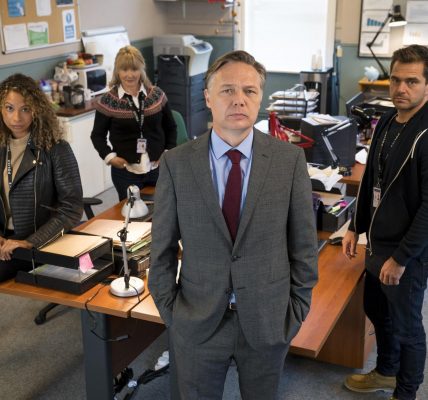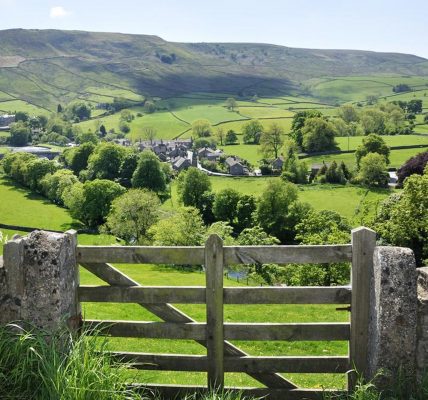A look inside Doncaster's new multi-million pound Danum Gallery, Library and Museum building
A look inside Doncaster's new multi-million pound Danum Gallery, Library and Museum building
Doncaster’s new museum not only tells the town’s story, it also brings the main library and art gallery under one roof. Local lad Phil Penfold is impressed. Pictures by Tony Johnson.
A recent study from a leading university hospital revealed that one of the most stressful things we do is moving home.
But if you think the domestic upheaval of going from one house to another is fraught with challenges, spare a thought for those who have just spent several years planning, organizing and assembling Danum, a multi-million pound, purpose-built new building in Doncaster to house the town’s main library, museum and art gallery all under one roof.
Think about the team who had to physically shift hundreds of thousands of books to the new site – as well as thousands of priceless paintings, sketches, illustrations and drawings. Not to mention a vast treasure trove of historic artefacts that tell the story of the town, its people and their surroundings, from its inception to the present day.
The museum is housed in Doncaster’s Civic and Cultural Quarter and is one of a number of council-led regeneration schemes helping to transform the town. The impressive gleaming new building also ingeniously incorporates one of Doncaster’s best-loved landmarks.
It is the main frontage of the Girl’s High School, complete with its twin copper domes. Pupils who went there will recall the rather incongruous more-than-life size statue of the Venus de Milo that used to preside over the lobby space, and many will rejoice that she’s back in position again. But this time, Venus is standing in a niche, and protected by a vast sheet of glass. Never again will she be subjected to the indignity of a vandal’s assault. Much of the original glossy and sage-green dado tiling of the school has also been carefully preserved.
“The chief idea was to open everything up, and to make it completely accessible,” says Bill McHugh, the strategic development manager. “That means that visitors will be drawn into the place and they’ll constantly be getting new views and perspectives of the place, and what it contains. One of the best examples is that many of the interior windows look down into the huge covered courtyard which contains the two complete locomotives which are now on display.”
Throughout the project, McHugh says the focus was on telling the town’s story. “As with every other municipal collection, there is far more in storage than can ever be on display. Items are acquired over the years, collections have to be ongoing so that they reflect and represent today for tomorrow’s visitors. For example, we’ve recently acquired some Black Lives Matter protest material, and items from a recent Doncaster Pride event. That may sound strange, but think about it – in fifty years time, the visitor of 2071 will be able to connect with the people of today, by seeing what was going on in our world.”
The town’s main library used to be housed in a building barely a stone’s throw away. A 1960s construction, it was originally built as a carpet showroom, and not as a library, complete with a rather austere façade. It was run on old-fashioned principles, in that the readers and borrowers had to approach the librarians at their posts, you were not allowed to use your own laptop, or charge your phone. That has all changed. Doncaster’s new library has free charging points everywhere, and a plethora of points where laptops and tablets can be plugged in. And the librarians themselves will be available to guide readers and researchers alike.
In addition to its central library, Doncaster also has another 25 branches around the borough. “It is all about interacting with our customers, and giving them the best service and experience that we can,” says Sharon Collins, the library services strategic manager. “We mustn’t lose sight of the fact that libraries are also, for some of the community, places of refuge and throughout the past dark year they have been sorely missed. We want people back in.”
Danum will be working closely with Doncaster’s other major museum, at Cusworth Hall, on the edge of the town. Cusworth is the ‘go-to’ place for schools and colleges, and has developed close links with all sorts of local educational bodies. “The idea is that we will rotate the smaller exhibitions every six months, and they will reflect local history, events, organisations, anything and everything in which our visitors may be interested,” says Kim Drabyck, the Heritage Doncaster strategic manager. “We are always open to suggestions and very keen to show pieces from the collection.”
The inventive design of the numerous galleries means that curators have been given space to develop themes. You will discover ‘period’ rooms, which show visitors how earlier generations of Doncastrians lived and worked in years gone by – were the TV sets of the 50s really that clunky?
There’s the vibrant stained-glass window rescued from the Parkinson’s Butterscotch shop of the Victorian high street, and across the way the stone coffin and skeleton of a Romano-British citizen. And in the art section are a trio of remarkable Joseph Wright of Derby portraits, all from 1760, and showing William Brooke (mayor of the town on three occasions), his daughter Elizabeth, and his son-in-law William Pigot.
Doncaster, of course, made a significant contribution to the rail industry and its heritage is well catered for. The steam locomotive Green Arrow was manufactured at the Doncaster Plant Works in 1936 and it joins No. 251 locomotive in the museum’s rail heritage centre.
“Our pair of locomotives are on loan from the National Rail Museum in York, and we work very closely with them. They are the ‘big boys’ when it comes to railway heritage, but we’re hoping that if you go to see what they have, then you’ll also come here to look at our amazing collection as well. And vice-versa,” says McHugh.
Another cornerstone of the museum will be the re-interpreted and restored military collection of the King’s Own US Light Infantry. But putting it all on view again has turned up a mystery. One, however, which will be answered in the weeks to come. A very heavy bronze bell was captured by men from the regiment in Burma. It has a fine, but very faint, running inscription across its upper surface – but no one knows what it says.
Until, that is, academics from Sheffield Hallam University took a scan of it, and went away to decipher what the message says. “We are waiting with great interest,” says McHugh, “because it will be another little piece in the huge jigsaw that is the history and heritage of Doncaster”.
*All visits must be booked in advance as only a limited number of people can safely use the building at any one time during Covid restrictions. For more information about the museum and for booking tickets go to https://www.dglam.org.uk/










